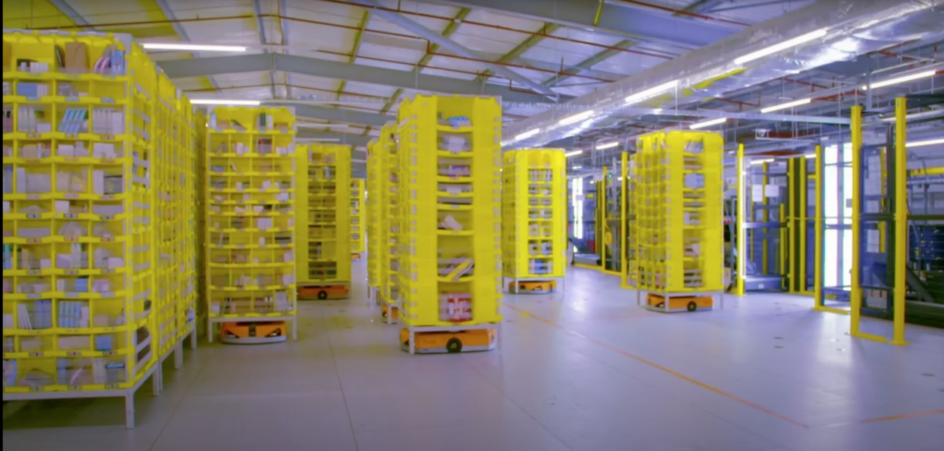Register Now for the “League of Robot Runners” Competition
You’re sitting at home, and you order a new calculator from Amazon. You then walk into the kitchen for a snack, knowing your calculator will be on your doorstep within a day or two. But what happens in-between?
“Some of these Amazon warehouses are semi-automated, including one in California, and what happens is that products stored on very lightweight shelves are being moved around by hundreds of robots,” says Sven Koenig, Chancellor’s Professor and Bren Chair of Computer Science in UC Irvine’s Donald Bren School of Information and Computer Sciences (ICS). “So, a robot will go to a shelf that contains the calculator, slide under it, and then move the shelf to the perimeter of the warehouse, where a human will get the calculator to ship to you.”
Sounds simple enough — but the reality is much more complex.
“You need to get millions of products into these warehouses, so the shelves are arranged very tightly,” says Koenig. “That makes the navigation task extremely complicated, because you have hundreds of robots moving around in these warehouses.” The YouTube video “Amazon Warehouse is Run by Robots?” illustrates this task and the need for high-quality software to control the robots.
If you’d like to help build such software, register for the League of Robot Runners competition! Now in its second year and sponsored by Amazon Robotics, the competition challenges participants to coordinate a team of mobile robots.

Join the Competition
UCI is one of the competition’s co-organizing institutions, together with MIT, Monash University, Rutgers University and USC. As participants tackle cooperative multirobot coordination problems — including robot dynamics, lifelong planning, task assignment and real-time execution — they will help contribute to high-impact industrial applications such as warehouse logistics and just-in-time manufacturing.
Anyone interested in addressing these problems can register a team (of one or more participants) for the three-month online competition, which officially kicks off on November 1, 2024 and ends February 16, 2025. During that time, a leaderboard will show the standings as teams control robotic errand runners, operating in a simple grid environment and completing various tasks. Teams can focus on the planning (computing paths to ensure robots avoid collisions), the scheduling (deciding which robot completes which task and when) or both.
So, whether you’re students, staff or faculty, get a team together and compete for one of several prizes. There is a $2,500 first-place prize for both the path-planning and the task-scheduling tracks. The $5,000 grand prize is for the combined track, where teams assign the tasks and plan the paths. There will also be a $1,000 prize for the team that computes the largest number of best-known solutions. Winners will be announced March 2, 2025, and a Robot Runners Virtual Expo will take place in May.
“We make it easy for people to get started by providing Start-Kit,” says Koenig, one of the competition chairs. “We also have a Multi-Agent Path Finding (MAPF) information page with lots of available resources, including tutorials.”
Help Revolutionize Robot Coordination
The goal of the competition is to bridge the gap between academia and industry by identifying and solving core combinatorial challenges in robot coordination.
“There’s currently a lot of movement in this area, but what holds companies back when it comes to these big warehouse installations is the software,” says Koenig. “The robots work, but you need good software so the robots don’t run into congestion issues.”
Competition entries will be open source so that others can build off the solutions. “Anyone can look at the entries, including those in academia and those in industry,” says Koenig, who encourages students to register a team. “Competition newcomers might have out-of-the box ideas that could revolutionize the field!”
— Shani Murray